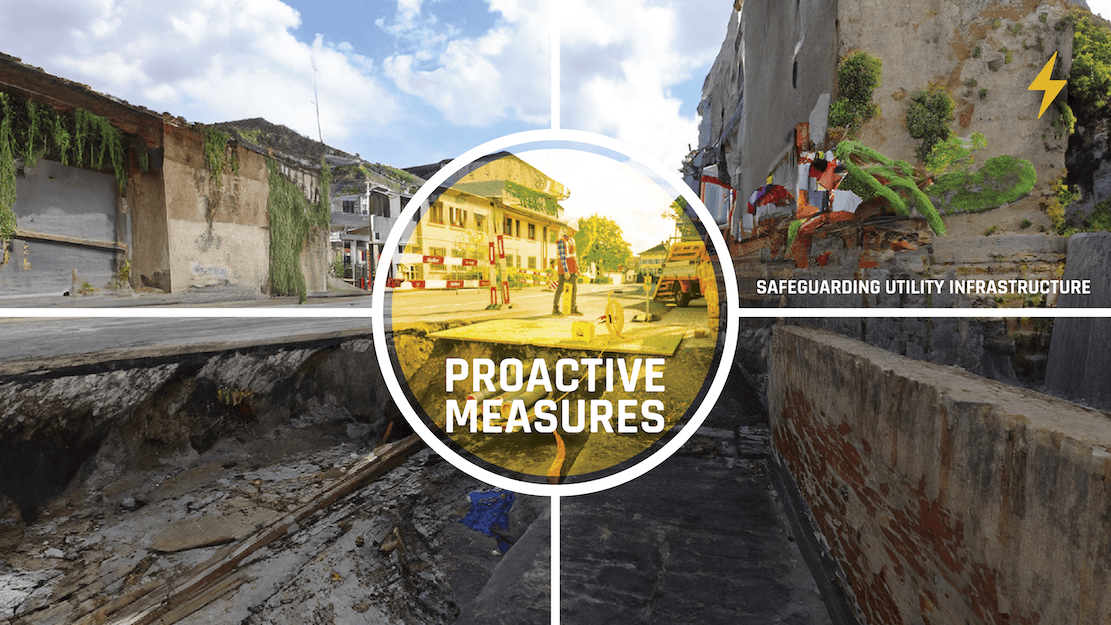
Safeguarding Utility Infrastructure
The old adage "prevention is better than cure" succinctly captures the essence of proactive decision-making especially in damage prevention. Emphasizing the importance of foresight and precautionary measures, this saying underscores the value of averting problems before they arise rather than addressing them after the fact. This isn’t always possible in damage prevention but right now the American energy landscape is in the midst of a significant transformation, marked by the adoption of innovative technologies and the availability of infrastructure to support more proactivity. This article will explore key areas such as leak surveying, gas detection, and project management, shedding light on how these practices contribute to utility safety and protection. Adopting a proactive stance towards damage prevention is imperative. Waiting for issues to surface can lead to significant consequences, making preemptive measures crucial for safeguarding both infrastructure and public welfare. Leak surveying emerges as a frontline defense, offering a systematic approach to identify potential hazards early on. Complemented by cutting-edge gas detection technologies, utilities can enhance their ability to swiftly detect leaks, reducing response times and mitigating risks. The incorporation of grading practices further elevates the proactive strategy, allowing utilities to prioritize repairs efficiently and allocate resources where they are most needed. By intertwining leak surveying, gas detection, and project management utilities can fortify their defenses against potential damages!
Improving Gas Detection
As natural gas utilities prioritize safety, loss and damage prevention; the role of cutting-edge gas detection technologies gets more and more important. According to RealClearEnergy.orglaser detection devices, ”have proven to be highly effective tools for detecting gas, and, over time, this technology helps reduce operating costs, which is especially important for cost-conscious not-for-profit public gas utilities that are owned by their communities.”.
Furthermore, Midwest Energy, responsible for monitoring over 3,000 miles of gas pipeline throughout Kansas, is enhancing its leak survey capabilities through the adoption of state-of-the-art technologies. “Handheld laser gas leak detection devices, which are regularly upgraded to meet the latest operation and regulatory requirements in the field, can identify gas leaks at a greater distance from the gas line or meter than ever before. Streamlining the leak survey process, especially in rural areas, is crucial for protecting the safety of utility employees and the families they serve.”
Enhancing Leak Surveying
The resiliency of America's natural gas distribution pipeline infrastructure has been a cornerstone of reliable energy delivery. To meet growing demand while minimizing emissions, utilities are focusing on improving operational efficiency. A proactive approach would increase the frequency of leak surveys, utilize modern technologies such as aerial and vehicle surveys and adopt nascent tech like real time sensing. Companies like FiberSense are now offering tech solutions that provide detection of leaks in real time which could be a game changer for leak surveying. The significance of federal regulations, such as the 2020 Protecting Our Infrastructure of Pipelines and Enhancing Safety (PIPES) Act, encourage comprehensive leak analyses and prioritize repairs - basically proactivity is being enshrined into law.
Project Management
Effective project management plays a pivotal role in safeguarding pipelines from damages and leaks, offering a proactive approach to mitigate potential risks. This blog explores the strategic integration of project management practices as a preventive measure, emphasizing the significance of meticulous planning, comprehensive risk assessments, and innovative technologies in ensuring the integrity and longevity of pipeline infrastructure. Ticket management solutions like Utilocate provide project management optimization from project planning to risk management to compliance to stakeholder collaboration.
Looking Ahead
A proactive stance in preventing damages and leaks to pipelines is achieved through the orchestrated efforts of project management, enhanced leak surveying, and advanced gas detection. Project managers, pivotal in this initiative, strategically plan, conduct thorough risk assessments, and leverage innovative technologies to reinforce pipeline integrity. Augmenting traditional leak surveying methods with modern technologies allows for early detection, while advanced gas detection systems provide real-time monitoring. Together, these components form a cohesive and proactive damage prevention strategy, ensuring the resilience and safety of pipeline infrastructure in an evolving energy landscape.
Share this Post











